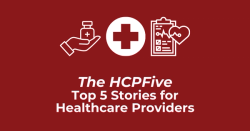New research of national registries in Europe suggests use of psychotropic medications, such as hypnotics, ADHD medications, and antidepressants, has increased exponentially in children and adolescents with type 1 diabetes.
An analysis of data from more than 3.7 million Swedish children and adolescents receiving care between 2006 and 2019, results of the study demonstrate rate of psychotropic medication use has more than tripled in children and a 5-fold increase was observed among adolescents during the study period.
“To our knowledge, this is the largest nationwide population-based cohort study examining psychotropic medication use among children and adolescents with [type 1 diabetes],” investigators wrote.1
In recent years, multiple studies have come forth emailing an increase in the prevalence of type 1 diabetes, including an analysis of data from the SEARCH in for Diabetes in Youth study suggesting rates of type 1 diabetes in children and adolescents could increase by 65% between 2023 and 2060.2 Led by Shengxin Liu, MSc, of the Department of Medical Epidemiology and Biostatistics at Karolinska Institutet, the current study was launched with the intent of further exploring how increased prevalence of psychiatric disorders associated with type 1 diabetes might be reflected in trends and patterns of psychotropic medication, which investigators cite as a cost-effective approach for alleviating psychiatric symptoms. With this in mind, investigators designed their research endeavor as a population-based cohort study by combining data from multiple national registries in Sweden.1
Linking data from the Total Population Register, National Patient Register, and Prescribed Drug Register, investigators obtained information related to patients residing in Sweden at some point from 2006-2019. In total, 3,723,745 children and adolescents were identified during this time period. Among this cohort, 13,200 had a diagnosis of type 1 diabetes, with a median age of 11.1 (Interquartile Range [IQR], 7.6-14.7) years at diagnosis. Investigators followed these patients from birth up to their 18th birthday, emigration, death, or end of study.1
For the purpose of analysis, children were defined as 0-11 years and adolescents were defined as 12-17 years. Investigators pointed out psychotropic medications were placed into the following groups: first-generation antipsychotics, second-generation antipsychotics, selective serotonin reuptake inhibitors (SSRIs), other antidepressants, anxiolytics, hypnotics, mood stabilizers, and ADHD medication.
Upon analysis, results indicated psychotropic medication dispensation increased from 0.85% (95% CI, 0.65-1.10) to 3.84% (3.11-4.69) among children with type 1 diabetes and from 2.72% (95% CI, 2.15-3.39) to 13.54% (95% CI, 12.88-14.23) among adolescents with type 1 diabetes. Among those without type 1 diabetes, rates increased from 0.66% (95% CI, 0.65-0.68) to 2.29% (95% CI, 2.27-2.32) among children and from 1.77% (95% CI, 1.74-1.79) to 10.29% (95% CI, 10.28-10.36) among adolescents (both P for trend < .001).1
Further analysis revealed the following increases in the annual period prevalence of different medication groups among children with type 1 diabetes:1
- SSRI: from 0.01% to 0.33%; P < .001
- Hypnotics: from 0.04% to 1.92%; P < .001
- ADHD medication: from 0.19% to 2.13%; P < .001
- Anxiolytics: from 0.43% to 0.67%; P < .001
Among adolescents with type 1 diabetes, notable increases in annual period prevalence were observed for the following groups:1
- First-generation antipsychotics: from 0.04%to 0.15%; P=.003
- Second-generation antipsychotics: from 0.07% to 0.75%; P < .001
- SSRI: from 0.92%to 5.81%; P < .001
- Other antidepressants: from 0.11% to 2.48%; P < .001
- Hypnotics: from 0.39% to 5.02%; P < .001
- Anxiolytics: from 0.88%to 3.01%; P < .001
- Mood stabilizers: from 0.64% to 1.20%; P < .001
- ADHD medication: from 0.53% to 4.07%; P < .001
Investigators pointed out psychiatric care was the primary prescription source among those with type 1 diabetes receiving a prescription for psychotropic medication and up to 50.1%of treatments lasted more than 12 months. Additionally, adjusted analysis suggested children and adolescents with type 1 diabetes experienced greater cumulative incidence and hazard ratios of medication initiation after disease onset relative to their same-age and same-sex counterparts without type 1 diabetes.1
“The findings from our study emphasize the importance of integrating pediatric diabetes care and mental health professionals when managing children and adolescents with T1D. This collaborative effort is essential not only for the early detection and screening of patients’ psychological needs but also for the diligent monitoring of psychotropic medication usage and patient outcomes,” wrote investigators.1
References:
- Liu S, Lagerberg T, Ludvigsson JF, et al. Psychotropic Medication Use in Children and Adolescents With Type 1 Diabetes. JAMA Netw Open. 2023;6(10):e2336621. doi:10.1001/jamanetworkopen.2023.36621
- Campbell P. Rates of type 1, type 2 diabetes expected to balloon in US by 2060. HCP Live. January 12, 2023. Accessed October 3, 2023. https://www.hcplive.com/view/rates-of-type-1-type-2-diabetes-expected-to-balloon-in-us-by-2060.



